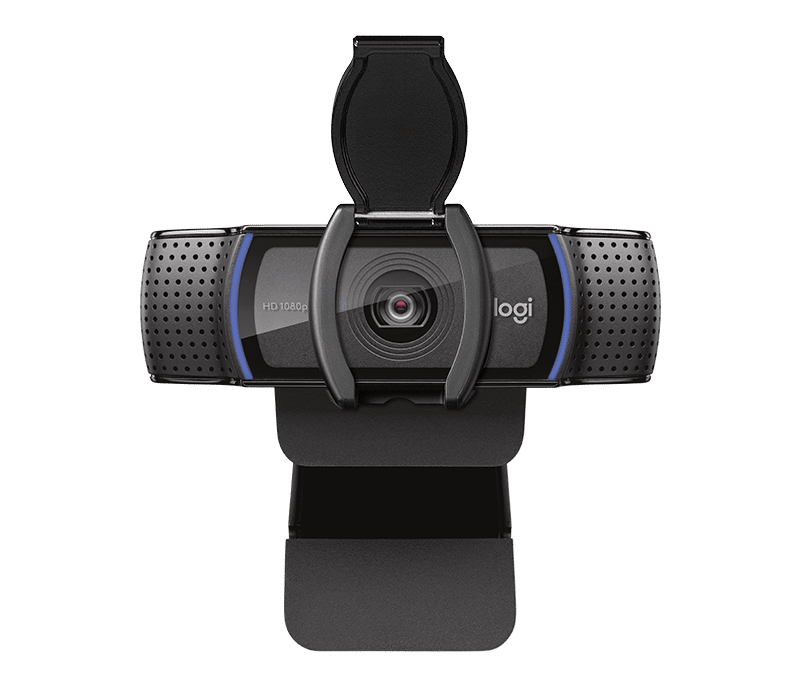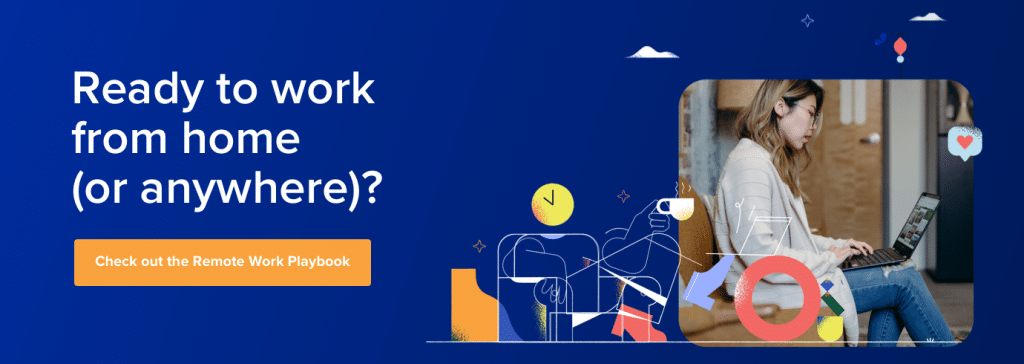Most people rely on the camera built into their laptop or desktop monitor.
It’s always there, there’s nothing to plug in, and for most people, the quality is good enough.
So why would someone spend money on a webcam? (Hint: If you’re working remotely and use video conferencing software often.)
Let’s look at when you’re good to go with just a built-in camera—and when you need to splurge a little on a standalone camera.
Shopping for a video conferencing tool? (Or just curious about what to look for?) Grab the free checklist to help you choose the right one for your team or business.
When a built-in camera is enough:
- You work primarily from a laptop and tend to stay pretty mobile and travel light.
- Most of your meetings are with colleagues and maybe clients, but these are more casual experiences.
- You don’t like having extra devices around to have to plug in. (If you have an Apple computer, for example, a docking station is not an easy way to plug and play.)
When you might need a standalone webcam:
- You’re doing training or professional presentations that are being filmed or viewed in HD.
- You work from home full time and are regularly on video meetings with clients.
- You feel really comfortable in front of a camera and want the best possible experience for you and those connecting with you.
Learn how to have more productive meetings with the Guide to Better Meetings.
4 considerations when you’re choosing the right standalone webcam:
Resolution
How high of a resolution do you need? If you don’t work in a creative field (e.g., you’re not a videographer) or you’re just doing face-to-face meetings with colleagues all day, you probably don’t need a super HD camera. A video conferencing tool like RingCentral Video and your phone or computer will probably do just fine:

With RingCentral Video, you can have video calls on your phone, tablet, or computer.
Design
Do you want a super futuristic-looking webcam, or do you not really care what it looks like? For design, it’s really up to your personal preference. Generally speaking, of course, cool-looking cameras will set you back a little more.

This Logitech C920S camera is priced pretty reasonably, and one neat feature of the design is its little flap that covers the camera when it’s not being used if you’re worried about being spied on.
Lighting
Depending on your preferences, lighting might be an important factor for you. Maybe your home office doesn’t get enough light (or you just really don’t like being in a shadow during your video calls).
Some cameras, like the Razer Kiyo, come with built-in ring lights so that you don’t need to buy separate lights for your WFH office setup (granted this one is designed for gaming, but it’ll work just as well):

Price
Standalone cameras range widely in price—you could get one for $20 or $30, or invest in a really good one for hundreds of dollars. (Though you’ll most likely not need something that fancy.)

So should you use a standalone or built-in?
Depending on your needs and the specifics of your role, the built-in camera on your phone or computer will probably suffice most of the time if you’re just doing video conference calls with your team.
If you do need a standalone camera, make sure to look at what you need specifically—don’t get sucked into purchasing an overly expensive one whose bells and whistles you’ll never use!
Originally published Apr 06, 2020, updated Jun 23, 2021






